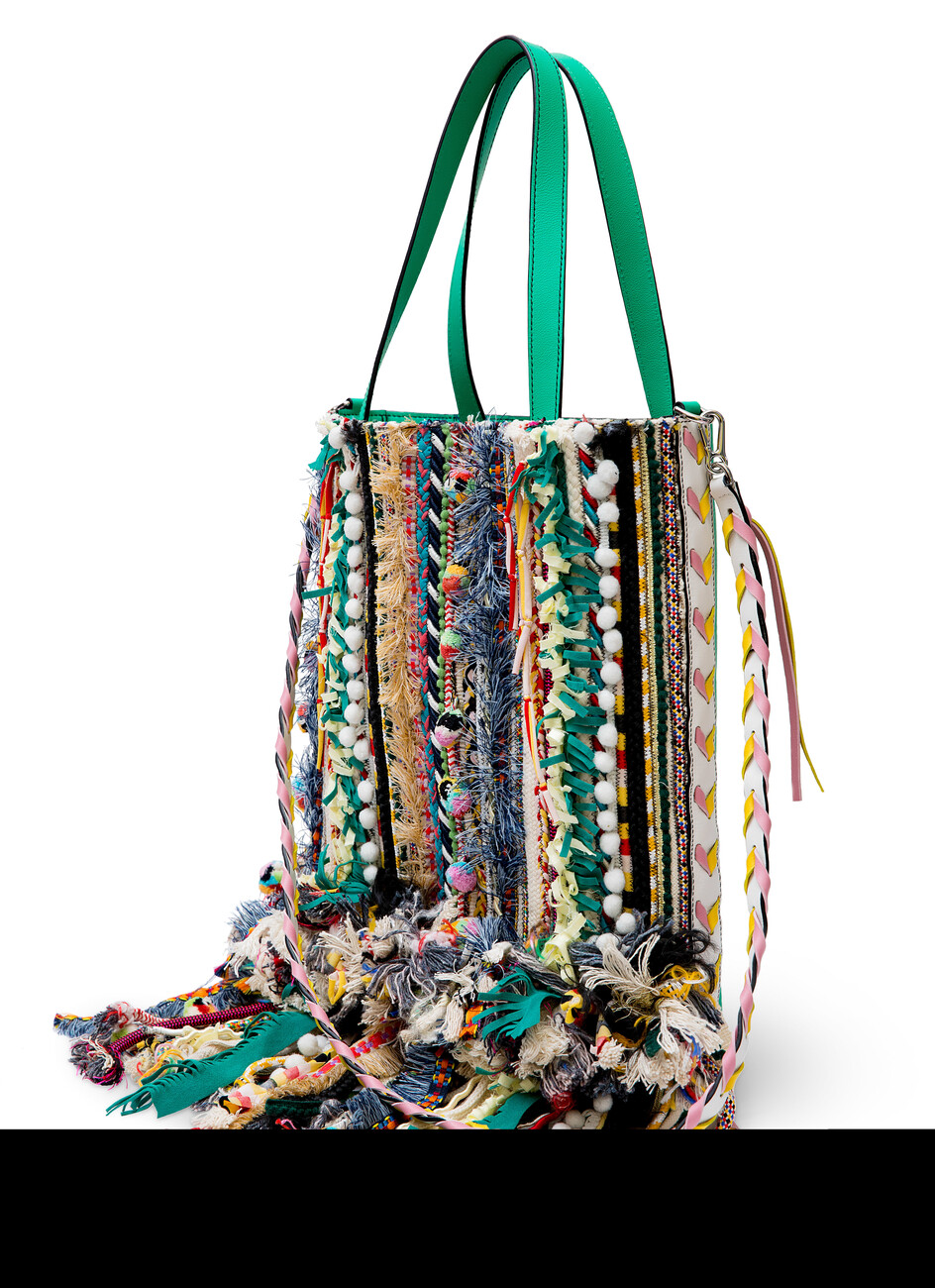SALONE DEL MOBILE 2018
Textile gems
Designer J.W. Anderson is considered a lateral thinker of the international scene, someone who tirelessly pushes boundaries and categorically rejects stereotypical thinking. In 2014, longstanding Spanish fashion house Loewe recruited him as its creative director – and with his very first womenswear collection, which broke the mold with its pleasing eccentricity, Anderson catapulted this almost forgotten brand back to the front row of fashion. He describes himself as a material fetishist, and he loves interdisciplinary work and stylistic journeys through fashion decades. Most significantly, however, he shows a fondness for traditional artisan cultures, which he places in a modern context with the help of contemporary technology.
For the 57th edition of the Milan Furniture Fair Salone del Mobile under the guidance of its British boy wonder, Loewe launched an exclusive and comprehensive collection of quilts, wall hangings and bags, which were produced with the support of traditional businesses around the world. Anderson and his creative team spent an entire year traveling. In the furthest corners of Europe, in Asia, Africa and South America they found those rare workshops in which time-honored skills were still being practiced in the original way – such as hand-embroidered Indian ribbons, for example, which were used to form quilts and tote bags, delicate Japanese paintings or elaborate Senegalese patchworks for luxurious wall hangings.
The stated objective of the collaborations is the cumulation of knowledge and almost-forgotten techniques, detached from time and space; the notorious bridge between the traditional and the modern – after all, Loewe is famous for its excellence, innovativeness and extraordinary aspirations when it comes to working with textiles and leather. Using wool from the vicuña, for example, a lama-like animal native to the Andes, a precious fiber for fine carpets could be produced with the help of local craftspeople – with the same claim to sustainability valued by the forefathers of the Incas centuries ago. Other pieces on show came from printers, embroiderers, knitters or weavers from Spain, Italy and Germany, with whom Loewe collaborated for its ready-to-wear collection, too. The result speaks for itself: a shimmering potpourri of colors, forms and surfaces, patterns and textures, an appeal for the uniqueness and excellence that only reveal themselves through detailed observation of the piece as a whole.












